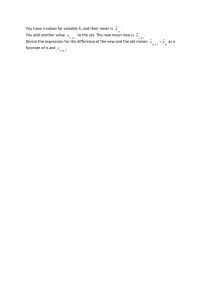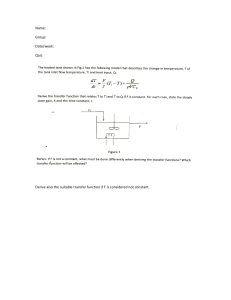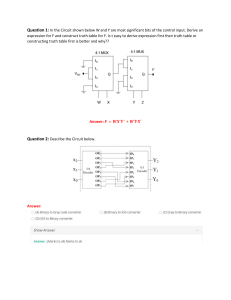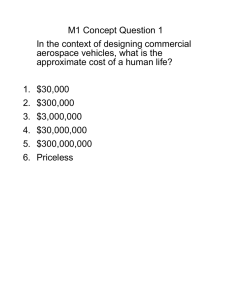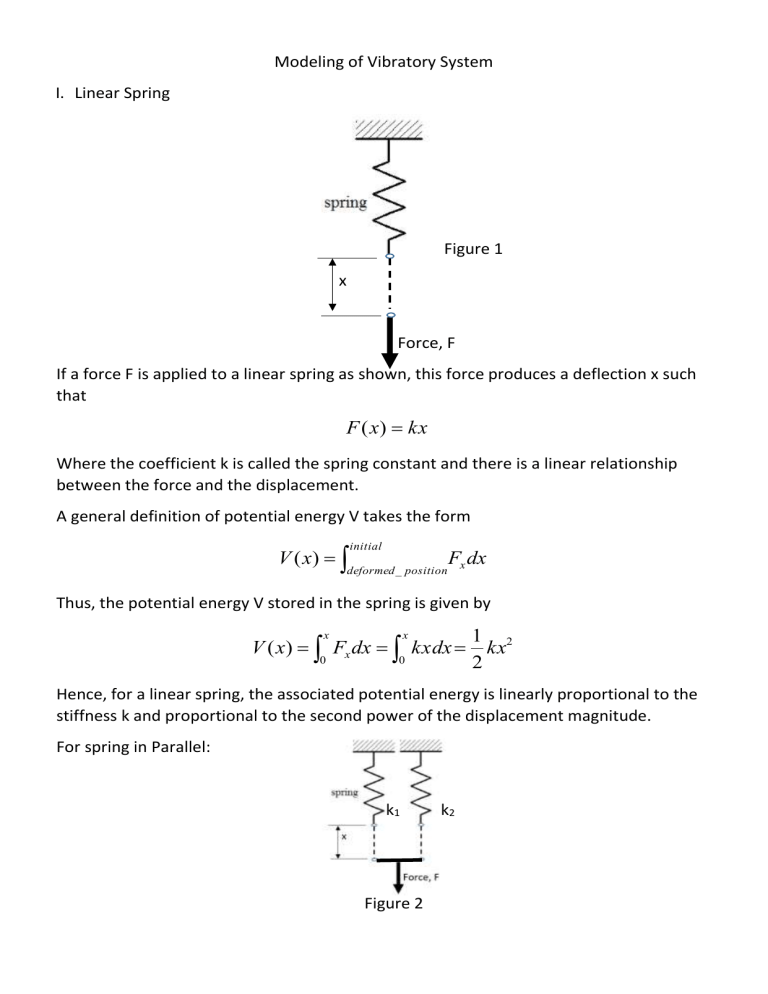
Modeling of Vibratory System I. Linear Spring Figure 1 x Force, F If a force F is applied to a linear spring as shown, this force produces a deflection x such that F ( x ) kx Where the coefficient k is called the spring constant and there is a linear relationship between the force and the displacement. A general definition of potential energy V takes the form V ( x) initial deformed _ position Fx dx Thus, the potential energy V stored in the spring is given by x x 0 0 V ( x) Fx dx kxdx 1 2 kx 2 Hence, for a linear spring, the associated potential energy is linearly proportional to the stiffness k and proportional to the second power of the displacement magnitude. For spring in Parallel: k1 Figure 2 k2 When there are two springs in parallel as shown in figure 2 and the bar on which the force F acts remains parallel to its original position, then the displacements of both springs are equal and therefore, the total force is F ( x) F1 ( x) F2 ( x) F ( x) k1 x k2 x (k1 k2 ) x F ( x) k e x where: ke = is the equivalent spring constant for two springs in parallel ke (k1 k2 ) In general, for N springs in parallel, we have N k e ki i The potential energy for the spring combination shown in figure 2 is given by V ( x) V1 ( x) V2 ( x) To determine V(x): V ( x1 , x2 ) V1 ( x) V2 ( x) V ( x) 1 1 2 2 k1 x1 k 2 x2 2 2 1 (k1 k 2 ) x 2 2 Problem Set 01 NAME: ____________________ 1. For spring in series: a. Draw the figure of spring in series. b. Derive the equivalent spring constant of spring in series c. Derive the potential energy for the spring combination in series 2. For the spring shown below, derive the following: a. Equivalent spring constant b. Potential energy 3. For the spring shown below, derive the following: c. Equivalent spring constant d. Potential energy
